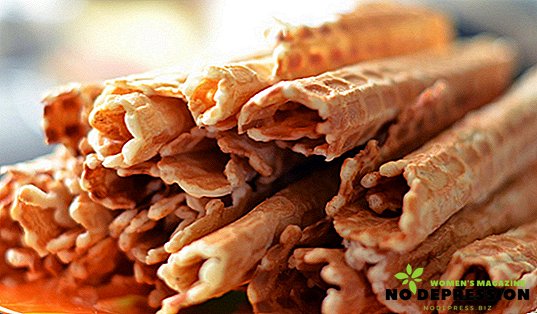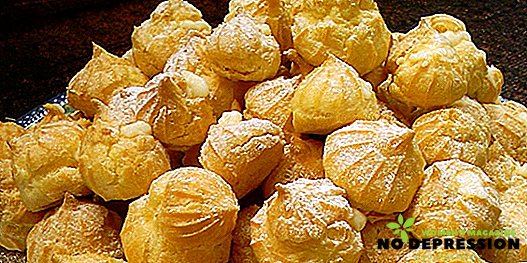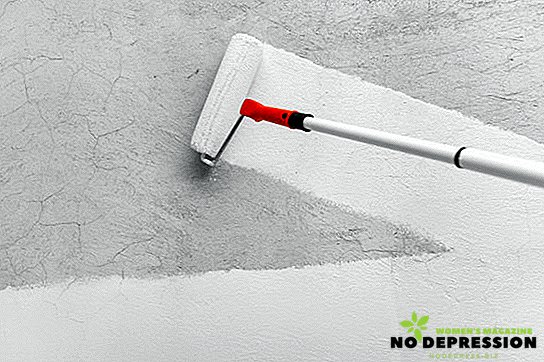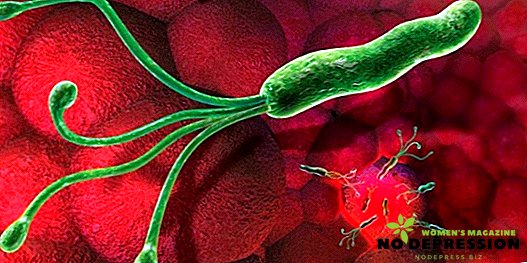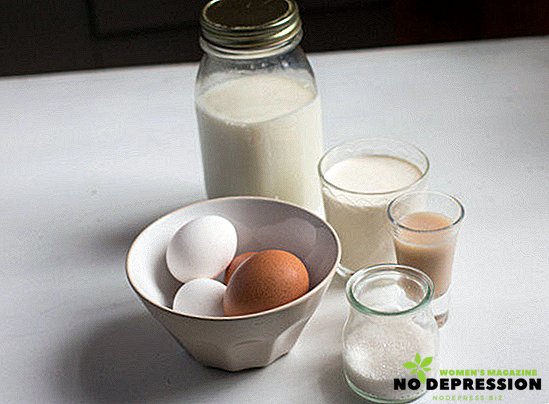Phalaenopsis, dendrobium, cambria, dwarf orchid - these orchids are the most common hybrid species, their care is simple. It is only necessary to take into account all the rules related to the maintenance of plants at home.
How to care, transplant, water, fight with pests of orchids - you have to gradually explore the owners of languid beauties. Master all the nuances - the plant will bloom for a long time and abundantly, grow well and multiply. It is quite possible that not one orchid will appear on your windowsill, but an entire greenhouse.
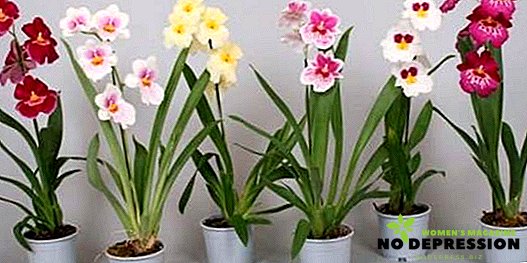
Orchid family
There are thousands of species, much more hybrids. Differ in a variety of characteristics, colors, shapes, sizes. What is sold at every step - and there are hybrid forms.
In the wild, common in tropical latitudes. Here they grow on trees (epiphytic, air), feed on decaying wood, saturated with moisture of the tropics. Ground orchids - perennial grassy temperate latitudes, grow like ordinary plants.
Getting used to new living conditions
You have a new plant - orchid. He now has a permanent home and a different habitat. Moving for an orchid is stressful, make sure that the adaptation period is painless.
 Organize quarantine plants at home after purchase. Do not put it right next to your indoor flowers, isolate for a while. Bright sunlight, dressing and watering are also not needed yet, let it stay for two weeks alone, let the flower "survive" the move.
Organize quarantine plants at home after purchase. Do not put it right next to your indoor flowers, isolate for a while. Bright sunlight, dressing and watering are also not needed yet, let it stay for two weeks alone, let the flower "survive" the move.
Carefully inspect the plant. Usually in the shops they are treated with prophylactic agents that protect against diseases and pests, it is not excluded that the flower is infected. Quarantine was successful - choose a well-lit place for a flower (direct sunlight is undesirable), gradually water it.
The store offers special floral antistress. The plant will do fine without them. Do not immediately treat the leaves with drugs from pests. Do not overdo it, do not bring your own harm to the room beauty.
Orchid transplant features
Nobody immediately transplants the plant. The meaning is, if the flower is not in the usual substrate, but in a special moss called sphagnum.
A transplant is recommended no more than once every two years, provided that the substrate becomes saline, tamped down, air access to the roots is difficult, or the roots have grown, and the capacity has become small.
How to transplant an orchid?
The pot is chosen plastic and transparent, with wide holes for drainage. Orchid roots must be visible to immediately determine the purity of the substrate (may rot) and the amount of moisture.
If the walls of the tank accumulate and the condensate lasts for weeks, then the ground is bad, it is urgent to change it. Size - no more than the root system, taking into account the increase in distance of 1-2 cm at the edges.
Soil for orchids
 You can prepare yourself, it is better to buy ready.
You can prepare yourself, it is better to buy ready.
In stores it is enough, the price is affordable. The substrate for orchids consists of pine bark, peat, and sphagnum is found with moss.
The basis of the composition - whole pieces of bark. If the bark has crumbled, the orchid mixture is unusable: moisture for the plant is consumed a lot, the air will pass poorly.
Before planting, the orchids are soaked in bark in order to better absorb moisture during the irrigation of the transplanted plant.
Transplant technology
- Soak the orchid in the water so that the plant can easily come out of the pot. Hold, carefully, slowly remove, pull up.
- To free the roots from the remnants of the substrate is not so simple. It is better to immerse them in water for half an hour. Remove dead and rotted roots with a knife. They will be unhealthy brownish, if you pin down your fingers - water will stand out. Damaged roots are removed to green tissue. Disinfect the sections with activated carbon. Sometimes part of the roots come to the surface and firmly merge with the leaves. Non-core leaves can be removed. Process the cut cut iodine or brilliant green.
- The root system is dried. Extra moisture should not be. Leave in the open air for several hours. By the time of planting, the wounds will tighten, the water will evaporate.
- Correctly pick the pot. If the cut roots are many, the plant may not need the capacity of a larger volume.
- Before transplantation, the new substrate is sterilized.
- Drainage is placed at the bottom: a layer of expanded clay in 3, 4 cm, then - part of the mixture. Then the plant is placed in the center of the pot, not buried. Growth point remains on top. Hollow spaces are filled with a mixture, pressed. The roots of the plant are placed freely.
- Abundantly watered. A warm shower is recommended immediately, then they are sent to a basin of water for 15-20 minutes.
- Put the transplanted orchid for two weeks in the shade. The air temperature in the room is not less than 20-22 degrees.
Orchid repotting during flowering is impossible. Experienced flower growers consider the most favorable spring period.
Where to put, how to water and fertilize?
Orchids behave differently, each capricious in its own way. New and already known hybrid varieties are displayed taking into account the maximum ease of care. But there are rules common to all orchids, which must be strictly followed.
The whims of orchids:
- sensitive to drafts;
- Do not tolerate hot, blinding sun.
They prefer a bright place, but not in direct sunlight, otherwise they will get burned, then the leaves will turn yellow and fall off. In winter, blooming orchids are placed closer to the light, additionally illuminated with phytolamps. In this period of the year, most plants stop their life; a period of laying new shoots begins.
Watering
Each species has its own characteristics: some like wet soil and require frequent watering, others feel good only in a dry substrate. All, without exception, stand dry and without consequences, drying out, but not waterlogging.
 Orchids are abundantly watered only during flowering and ejection of peduncles. Water should be soft. Ideal to use thawed or rain, can be boiled or plain, defended water. The irrigation technology is simple: the plant is placed for a few minutes in a container with warm water or poured from a watering can.
Orchids are abundantly watered only during flowering and ejection of peduncles. Water should be soft. Ideal to use thawed or rain, can be boiled or plain, defended water. The irrigation technology is simple: the plant is placed for a few minutes in a container with warm water or poured from a watering can.
During the growing season (May-September), water is watered every day. During the rest period (October - April) - the frequency of watering once every 4-6 days, although there are no exact recommendations, watch the plant, decide on the spot. The orchid has a young pseudobulb - water more often. If there is no vegetative growth, fluid is needed less often.
Whether the plant has enough moisture is determined by the characteristic features of the root shell and its tops:
- silver or gray - watering is insufficient;
- glossy, shiny, green - all is well.
Fertilizers and dressing
There is an opinion: the abundant dressing reduces immunity. Enough good watering, substrate (updated every two years) and lighting. Part of flower growers welcome. It is needed during the growth period, once every two or three weeks.
Buy fertilizers only for orchids, for other indoor plants - not suitable.
Feed frequency:
- From February to August - through watering;
- From October to February - once a month.
- During the flowering period is not fertilized.
Carefully study the instructions on the bottles with fertilizers, keep the necessary proportions.
Popular types of indoor orchids
Homemade orchids will amaze even the most indifferent to the nature of people. It seems that here an invisible artist had a hand.
There are a variety of pictures: you cannot talk about dots, stripes, small squares and rectangles, petal shapes and colors, words are not enough. Some conquer the unusual shape of the leaf, others - the quaintness of the roots and tubers.
Wanda
Epiphytic (air) orchid. The leaves are flat and cylindrical, long spike, many flowers. They are large, gathered in paniculate carmine, purple inflorescences, smell good, there is a rare blue among orchids, blue color.
In the first days of flowering - inconspicuous, gradually acquire a bright color peculiar to the variety. Roots grow to a meter. There are many hybrids. Capricious, difficult to care for. It requires a long, bright light and high humidity.
Cattleya
Hybrid variety of epiphytic orchids. Spectacular plant, it smells great. Flowers are large, of various shapes and shades (yellow, orange, pale yellow), occur up to 20 cm in diameter, bloom several times a year. Do not buy an orchid without studying its character. Capricious over the top. Unusually light-loving plant.

Ludysia
Thanks to the extraordinarily beautiful leaves, she deserved the name: precious. They are velvety, olive, emerald, brown in color, with bright veins. The flowers are small, pale.
All beauty is concentrated in the sheet. It can be lanceolate, round, oblong. Orchid small in size. There are varieties with creeping shoots, in the form of a bush, hanging leaves.

Cymbidium
Slender and tall flower, although orchids do not have stable characteristics. In stores you can find, as a miniature, so tall, (a meter high) cymbidium. Goes for cutting for bouquets, does not fade for a long time. Practically does not bloom indoors, is carried out into the garden and kept until late autumn.
List all types of hybrid orchids - stupid exercise. They exist a great many. It is better to admire them, more benefit and pleasure. Our task is purely rational: to characterize three types of plants that are distinguished by comparative simplicity and ease of care.
Phalaenopsis
Another affectionately called "butterfly". This is a classic orchid genre. The most common among the plant species. Homemade orchid Phalaenopsis pleases variety of delicate, pale shades.
Intensively - in the autumn-winter period. During the formation of buds, prefers rest. You should not transfer to another place for no reason, it will start dropping leaves. Care is pretty simple.
Care at home: a pot with a flower can be put on the windows looking to the north, feels good on the east and west windows, on the south - it is necessary to slightly pritemn, protecting from direct sunlight. During flowering, feed 2-3 times a month, in autumn and winter - as many times, but the concentration of fertilizer is halved.
Comfortable temperatures - + 20-25 degrees, +30 - critical. Well preserved at +15.
Dendrobium
Translated from Greek means "he who lives on a tree." It is immediately clear: an epiphytic plant, by the way, among the species there are lithophytes living on stones. There are over 1000 species found in nature, many hybrids bred by breeders.
Dendrobium orchid's home is Indonesia, Thailand, Australia, and other hot, tropical countries. The stores sell several types of dendrobium: gold, pirish, lindley, harvey, farmer, amabil, noble or nobile.
A variety of types and differences, baffling, since there are no common characteristics, but some conclusions about the care of the dendrobium can be done.
Dendrobium Phalaenopsis
In order not to be sprayed and in the end not to get confused, let us dwell on the features of one type - dendrobium phalaenopsis. Together with the dendrobium nobile, these two plants are favorites on the shelves of flower shops. It looks like a hanging bunch of grapes.
The petals of the flower are large and wide. The color range is from pink to bright purple. Half-leaved orchid with long, fleshy leaves facing up. Propagated by cuttings or by dividing the bush.
Among their fellows stands out relative unpretentiousness. Blooms after maturation of the new generation of pseudobulb (false bulb, thickened part of the stem from members of the family of orchids).
If the plant is properly maintained and provided with proper care at home, then the old and new pevdobulb may simultaneously bloom. Blossom up to 20 flowers at once.
Acceptable room temperature - from + 10 to + 40, although the latter does not tolerate well, comfortable - from +18 to + 25 degrees. It is recommended to keep on the southeast side. In the cold season, additional light may be required. Loves moist air. It is easy to determine whether a plant has enough light. The leaves are green, then everything is in order, dark green, sometimes yellow - lack of coverage.
The degree of soil moisture is determined by the shell of the root and its top:
- silver color (watering is insufficient);
- glossy, shiny, green (all is well).
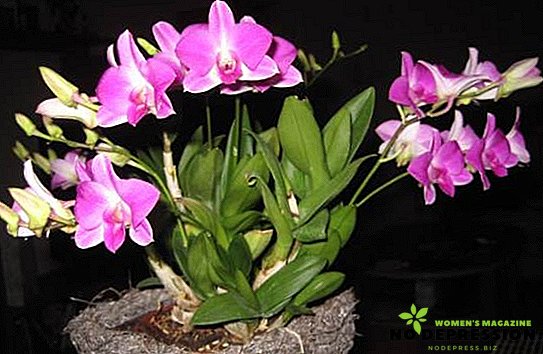
Cumbria
In fact, all types of cambria are united only by the common name of the brand. Hybrid variety bred by crossing several genera of orchids.
Refers to the sympodial, that is, creeping orchids that look like vines. Understand what kind of family belongs to the acquired hybrid, it does not make sense, to give the names of varieties of hybrids - too.
Orchid Cumbria is distinguished by some common characteristics: pseudobulb roundness, narrow, elongated leaves, a symphoidal (creeping) type of growth. The flowers are different in shape: similar to asterisks, rounded, size from 1-10 cm.
This is a plant with purple or yellow flowers. Peduncle is located vertically, 5-10 flowers bloom on it. In the adult cambria, the peduncle sometimes branches.
When buying a cambria, pay attention: pseudobulbs must be healthy, dense, without spots, rotting, insects. The more pseudobulb the better. Hue - light and dark green.
Dwarf orchid
Mal, yes removed. Dwarf orchid phalaenopsis blooms almost half a year. East again, it is from there, from China or Japan. Of course, the noble plant has its own centuries-old history, a hereditary oriental miniature resembling the famous Japanese gardens.
Home care: they plant small, fragile orchids in transparent pots so that there is more light. The flower does not like the direct rays of the sun, prefers dark places with indirect lighting.
It blooms well and long at a temperature of 18-25 degrees. It can move and the heat, but does not like: weakens, the flowers begin to fall off. In winter, a sufficient temperature - 15 degrees
Vegetatively propagated by simple separation of shoots.
Gentle plants suffer from the usual orchid diseases. More often, these are consequences of improper care or viral diseases. Therefore, flowers are treated for the purpose of prophylaxis by special means.
Problems with maintenance and maintenance errors.
What else you need to know about growing orchids at home?
The plant suddenly ceased to bloom:
- the orchid is too hot;
- not well fed;
- violated the acidity of the substrate;
- roots are damaged;
- not enough light.
Fell down all the flowers and ovary: the orchid reacts to drafts or insufficient temperature;
A “baby” develops in pseudobulbe: it means that the flower will soon die.
Enemies of Orchids: Pests
 Ticks and thrips - the main trouble of all orchids. Ticks with the naked eye can not see, in their glasses, too, can not see.
Ticks and thrips - the main trouble of all orchids. Ticks with the naked eye can not see, in their glasses, too, can not see.
We need a microscope, although the result is obvious: the sheet is covered in dots, there are more of them. Mite sucks the juice from the leaf, over time it becomes dead.
Malicious mites attack young shoots, hit growth points, leave eggs, hide in a pot, in leaves, endure all kinds of struggle with them, prepare a generation calmly reacting to pesticides.
How to deal with ticks and other pests?
- Alternate drugs. The pest should not get used to them.
- It is better not to spray the orchid with a tick control agent, but soak the whole plant together with the pot in its solution for 10 minutes, and water it off until the soil dries out.
Mealybug and scale insects are able to eat a flower in a few days. They resemble lumps of white. Helps remedy konfidor-maxi, the Japanese drug "Aplaud." Well act hot shower, washing, soaking in a solution of aspirin.
Thrips. Small insects leaving spots on the leaves, the result of being eaten from the inside. Thrips larvae hide in flowers.
It is best to spray insecticides, follow the exact instructions. From folk remedies use infusion of celandine (100 g per liter of water).
Yes, orchids require care, but the beauty they give us is worth it.
And a lot of interesting information about orchids - in the next video.



